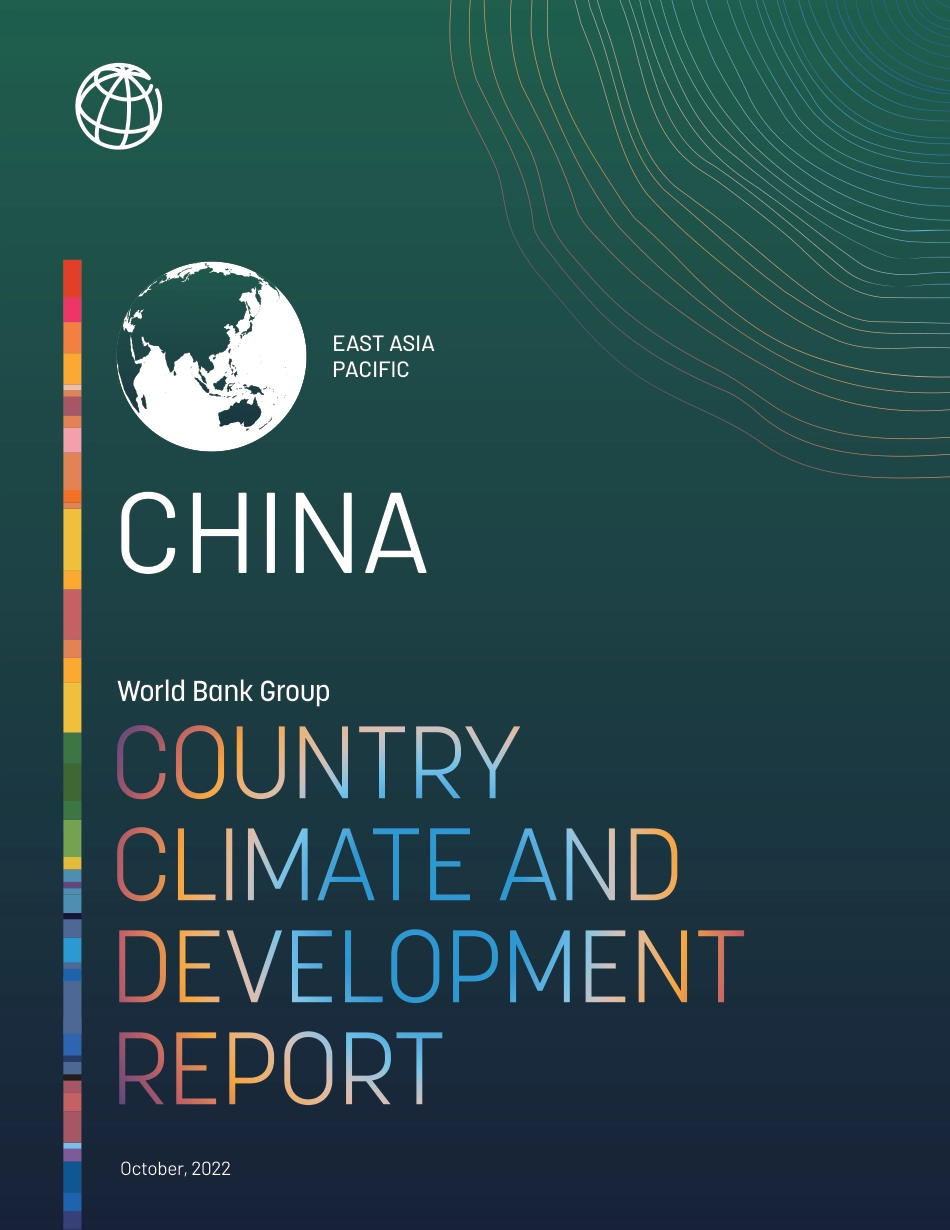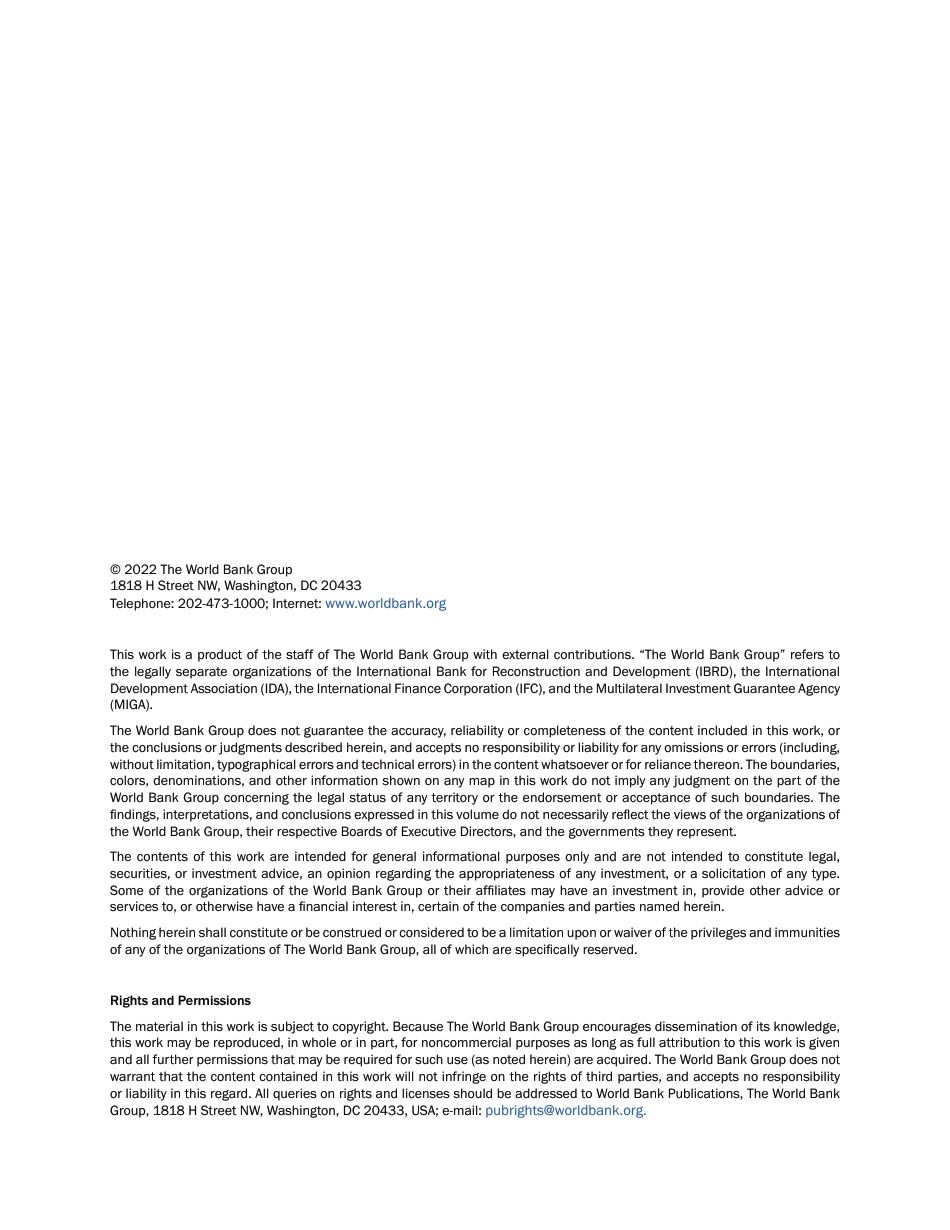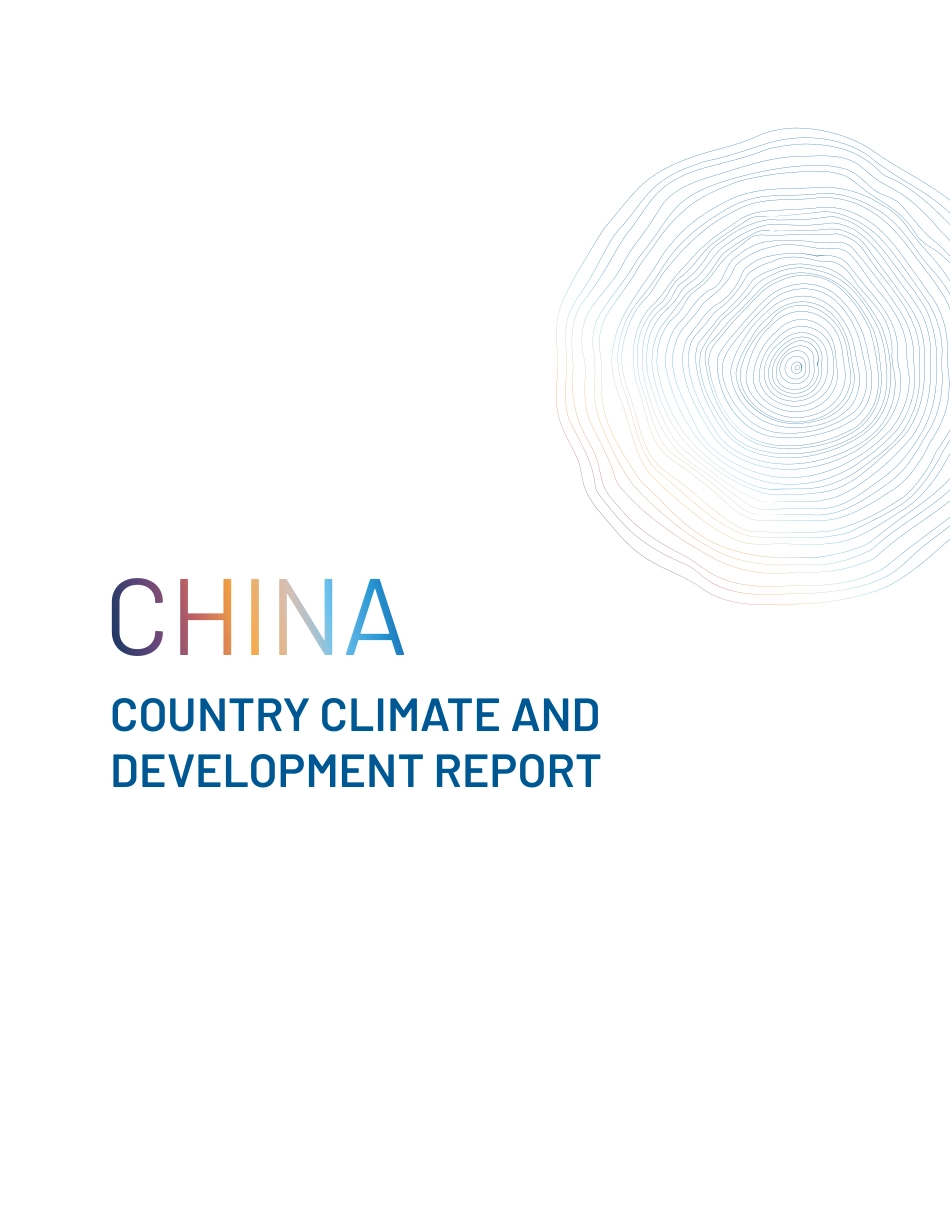iChina Country Climate and Development ReportEAST ASIAPACIFICOctober, 2022CHINAWorld Bank Group© 2022 The World Bank Group1818 H Street NW, Washington, DC 20433Telephone: 202-473-1000; Internet: www.worldbank.orgThis work is a product of the staff of The World Bank Group with external contributions. “The World Bank Group” refers to the legally separate organizations of the International Bank for Reconstruction and Development (IBRD), the International Development Association (IDA), the International Finance Corporation (IFC), and the Multilateral Investment Guarantee Agency (MIGA). The World Bank Group does not guarantee the accuracy, reliability or completeness of the content included in this work, or the conclusions or judgments described herein, and accepts no responsibility or liability for any omissions or errors (including, without limitation, typographical errors and technical errors) in the content whatsoever or for reliance thereon. The boundaries, colors, denominations, and other information shown on any map in this work do not imply any judgment on the part of the World Bank Group concerning the legal status of any territory or the endorsement or acceptance of such boundaries. The findings, interpretations, and conclusions expressed in this volume do not necessarily reflect the views of the organizations of the World Bank Group, their respective Boards of Executive Directors, and the governments they represent. The contents of this work are intended for general informational purposes only and are not intended to constitute legal, securities, or investment advice, an opinion regarding the appropriateness of any investment, or a solicitation of any type. Some of the organizations of the World Bank Group or...



